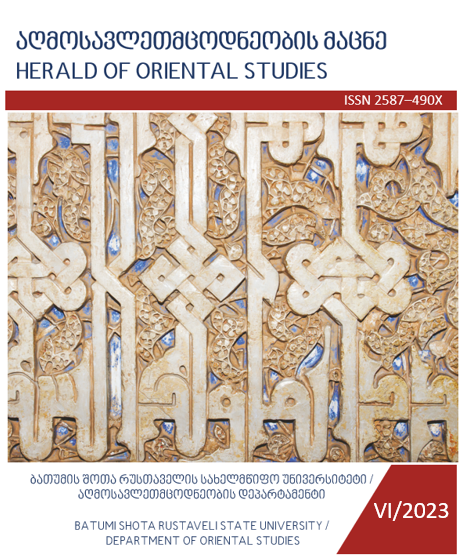The final seizure of Batumi and the establishment of Ottoman administrative authority
DOI:
https://doi.org/10.61671/hos.6.2023.7353Keywords:
Batumi, Liva, log, censusAbstract
There is limited historical information available about Batumi's early history prior to the 19th century in Georgian sources. Therefore, the Ottoman archival materials preserved in the archives and libraries of the Republic of Turkey play a crucial role in bridging this informational gap.
Among the valuable records stored in the archives, there is an extensive log dedicated to Batumi, cataloged under code 122 within
the Main Archive of the Department of Land and Cadastre in Ankara. This document, yet to be introduced into scholarly discourse, holds significant importance for unraveling the history of Batumi and its surrounding region.
Page B of this document contains a detailed text dating back to September 1704, offering intriguing insights into Batumi and the
neighboring villages. It mentions that this area was part of the Gurieli kingdom until a relatively recent period. This reference is instrumental in pinpointing the timing of Batumi's incorporation into the Ottoman Empire, as historical literature has offered differing opinions on this matter. While some scholars believed Batumi became part of the Ottoman Empire in the mid-16th century, others asserted it was in 1703. The historical source provided supports the latter perspective, indicating that Batumi and its adjacent villages were ultimately annexed by the Ottoman Empire in the early 18th century, leading to the establishment of Batumi as an administrative center.
According to the documents we have analyzed, during this specific era, the boundaries of the Liva of Batumi extended to the
western coast of the Black Sea and encompassed the territories of Atina (known today as Pazar). This document offers a comprehensive description of the region, allowing for multidimensional exploration of the period, including aspects such as socio-economic dynamics, political developments, ethnic composition, religious influences, demographic changes, and more.
Downloads
Downloads
Published
How to Cite
Issue
Section
License

This work is licensed under a Creative Commons Attribution-ShareAlike 4.0 International License.


































